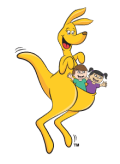Written by Dr Jane Williams, Dr Tessa Grigg and Bindy Cummings
Good hearing is important for learning in children, however to learn well, children also need to be able to easily understand, interpret and respond appropriately to what they are hearing, a task called ‘auditory processing’. It has been documented by many child development experts and sensory-motor specialists, that today’s children are struggling with auditory processing. This article explains how auditory processing works and provides some practical suggestions on how to support children in this area of development.
The developer of Johansen Integrative Sound Therapy (JIAS), states that children with learning difficulties or those who are not reaching their potential, often have inadequate auditory processing abilities1. This means that they process what they hear too slowly and can only manage to understand short blocks of words and only parts of a sentence. They overload quickly, cease to attend and their memory, comprehension and speech become scrambled. They often have delayed or poor speech and language skills, and are poor at phonics2, decoding new words, reading, spelling and comprehension. Often labelled ‘attention deficit’, they are frequently behind their peers emotionally. Learning difficulties are not always immediately obvious, but as learning becomes more complex, these children fall further and further behind their peers. In combination with the frustrations of not learning and understanding, behavioural issues can also become apparent. While the causes of learning and attention difficulties are complex, about 70% of children diagnosed with a learning difficulty, and 50% of those labelled ‘ADD’ have an auditory processing problem3. Such children are almost always unable to listen and learn effectively.
For the part of the brain that handles language and speech to function well, it is important to have good connections with the rest of an efficiently functioning brain, especially with the motor and sensory areas. Learning to talk and talking requires very complex motor planning. It requires the ability to initiate a motor act using an inner command. To make sounds to form a word, specific muscle movements of the throat, mouth, tongue and lips are needed for articulation. Then, the brain must decide which word follows which. Often, speech is delayed because these children are still working on getting their motor act together, and they have not completed their sensory integration.
Children’s environments are complex when it comes to sound, with lots of loud noises, maybe white-noise to get them to sleep and air conditioning, just to name a few. It has been shown that the human body’s auditory system reacts negatively to even short-term noise exposure4. Take note of how much noise there is in your child’s environment and look for times when there can be low auditory stimulus.
What you can do to assist your child’s hearing, listening and auditory processing
- Diet: Avoid foods that may irritate and inflame the mucous membrane lining of the ear canals and eustachian tubes that run from the ears to the back of the nose. Milk, formula, etc., drunk while lying down (e.g., from a bottle), will cause the liquid to back flow into the tubes and cause irritation and blockage
- Don’t smoke around your baby or young children: Smoking particles have an effect on hearing by blocking eustachian tubes. This creates a muffling of sounds and makes it harder for children to hear well and listen accurately
- Music and rhythm: Include music, rhythm and song in everyday life – when reading, moving, talking and singing
- Vestibular activities: The hearing and balance organs in the ears are closely connected. Provide your child with many vestibular activities such as rocking, rolling, tumbling, swinging, swaying and going upside down (once old enough). Note: if your child has an ear infection, reduce vestibular activities until given the all-clear by your doctor
- Sound Therapy. Specifically designed to improve a child’s hearing and auditory processing, through the use of specially formulated music sounds. Sound Therapy is usually not utilised until a child is identified as having auditory processing challenges.
Authors:
Dr Jane Williams (PhD, BMgt, RN(Paeds)) is one of Australia’s leading experts on baby and child development.
Dr Tessa Grigg (PhD, B.Ed (Tchng Primary and ECE) is the Research and Education Manager for GymbaROO-KindyROO.
Bindy Cummings (B.Ed hons) is a teacher, a GymbaROO early childhood neuro-developmental consultant and the co-creator of GymbaROO’s Active Babies Smart Kids series. She has been writing articles for GymbaROO’s First Steps magazine, digital platforms and media for over ten years
References
- Johansen K. Sound Therapy (JIAS): treating auditory processing problems. INPP International Conference; Barcelona, Spain, 2018.
- Drosos K, Papanicolaou A, Voniati L, Panayidou K, Thodi C. Auditory Processing and Speech-Sound Disorders. Brain Sciences (2076-3425). 2024;14(3):291.
- Nielsen AN, Brandt Å, la Cour K. Exploration of sensory processing difficulties among children attending primary school in Denmark. Occupational Therapy International. 2021:1-7.
- Sigaleva EE, Pasekova OB, Degterenkova NV, Marchenko LY, Matsnev EI. Nonauditory Effects of Noise Exposure to the Human Body. Human Physiology. 2023;49(6):649-55.

